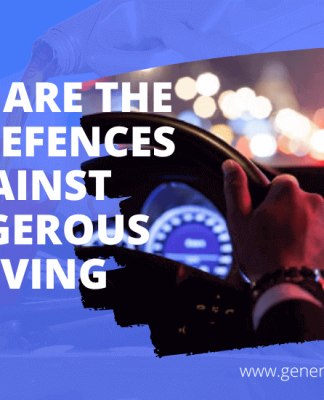Whether it’s representing a movement with #metoo or a message to people for change with #YesWeCan , the power of hashtags is undeniable!
And these days hashtags are everywhere, you see them on Twitter , Instagram , LinkedIn , Facebook and many other platforms.
The thing with hashtags is that there are no limitations to the strategy, anyone can create their own hashtags and they come in various formats.
So does that mean the world of hashtags is chaotic?
Well not exactly, even in this seemingly chaotic world there are certain principles one could follow to make better use of hashtags, have a defined goal for each of them and develop a strategy to execute and manage them.
Table of Contents
Brand awareness
Your own hashtag can be a tagline for your product/service or even just your company name.
It has to be catchy and creative so that people want to join in and use it too.
Hashtags can define your business on social media as they act as your signature tag.
The goal of this hashtag is to create user engagement that builds brand awareness for your business.
Tip: Avoid long and complicated hashtags.
This is something you want people to remember, so keep it simple! Also, do some research, make sure the hashtag is not already in use.
For example: If you are a designer jewelry retailer, use something like #DesignerJewelry .
Do not use #tetraemoslomejorofdesignjewelry . A great example of using a hashtag is Nike, they go with a simple #justdoit for their posts.
Filter search results
Social media searches incorporate hashtags, in most cases, when a search query is entered, a corresponding hashtag appears.
In fact, some people are saying that hashtags are the future of search algorithms.
In the image below you can see how hashtags are displayed on Twitter, Instagram and LinkedIn.
The good thing about showing up in hashtag search results is that you are connecting with the relevant audience, who are already interested in your product/service.
Tip: Avoid tagging every word in your posts; #don’t #mark #every #word #of #your #post . Too many hashtags make your posts look unattractive and hard to read.
Campaign hashtags
Becoming the most common use of hashtags is the format of the campaign hashtag tag.
In this type of hashtag, you are just promoting a particular campaign, usually in the short term. A word or phrase that makes a catchy and unique promotion.
Sometimes it can be a good idea to host a contest to start a buzz and get the audience to engage with you.
Tip: While it is possible to have multiple goals in a social media marketing campaign, it would be better to use only one goal per campaign.
A narrow target will also help you create the best hashtags.
For example: Lay’s brand has had a great idea by launching a #DoUsAFlavor campaign to introduce a new flavor to their chips.
Trending hashtags
To participate in trending conversations (Trendjacking), use trending hashtags.
People are always looking at trending hashtags, so if you’re using them, there’s a strong chance that a larger group than your contacts and followers will see your post.
Certain hashtags are meant to be used every year, such as #Halloween, #celebratevalentinesday, #merrychristmas, #happynewyear , and so on.
Tip: A great way to come up with creative and fun hashtags for these occasions is to plan ahead!
Also, remember to be relevant! If your brand doesn’t fit a certain hashtag, don’t force it!
For example: Dunkin’ donuts came up with a nice way to join the royal wedding conversation.
Content hashtags
These are the hashtags relevant to the content being posted, they don’t have to define your business, campaign or even be trending.
They simply have to fit well with the post you are making, which increases the appeal of the content.
Content hashtags are also valuable when people do general searches to find information on a specific topic.
In this sense, content hashtags improve the SEO of your post and get your updates seen by people beyond your circle of customers.
Tip: If you decide to use a long hashtag, capitalize the first letter of each word to avoid confusing your audience.
For example: Domino’s restaurant uses pizza toppings as their hashtags and then asks the audience for their preferences to engage them.
Niche trending tags
They are very specific hashtags that can be quite unusual at times.
But using a good niche hashtag can give you better targeting and get your post seen by more like-minded people.
Since many people do not use these hashtags, there is also less competition and you have a better chance of appearing higher in searches.
Some popular hashtag categories are; Product hashtags, lifestyle hashtags, event hashtags, and location hashtags.
Tip: Make sure to check the settings on your social media accounts, your posts should be open to the public and not just your followers!
For example: Here, Ferrari used #VintageCar to showcase their classic models. Targeting a specific type of people with this hashtag.
Call-to-action (CTA) hashtags
Encourage the online community to take a specific action that engages your brand.
It is a traditional marketing concept that is applied to social networks.
When a CTA hashtag works well, you’ll see posts on social platforms where people will take the appropriate action.
People like to gain a sense of engagement by posting with a certain hashtag.
Tip: Don’t try an action that is almost impossible! Chances are you won’t engage your audience and you won’t repeat the same hashtag multiple times in the same post.
For example: Coca-Cola used the CTA in a really effective way with their #ShareACoke campaign .
Other uses
- Change the conversation: This is usually when there is a mark of negativity, to recover, it can be a good idea to change the idea using hashtags. These positive hashtags should help turn a conversation around and turn it positive over time.
- Community Building: Very useful for branding and creating good PR, community building hashtags can be used to encourage people to come together for a greater good within a community or to raise awareness of particular issues facing a community. community.















